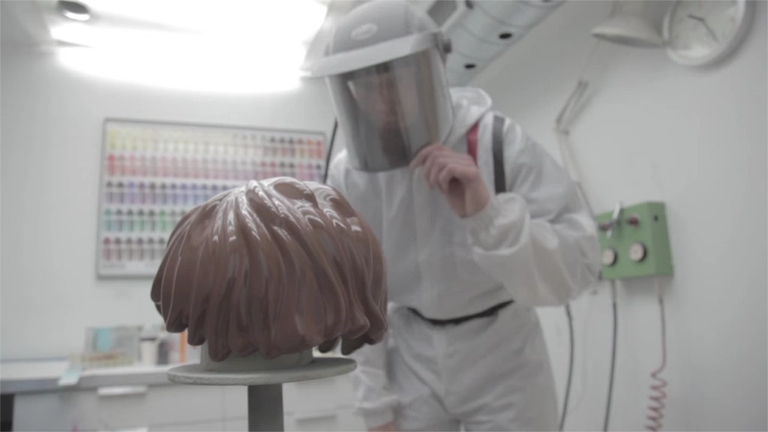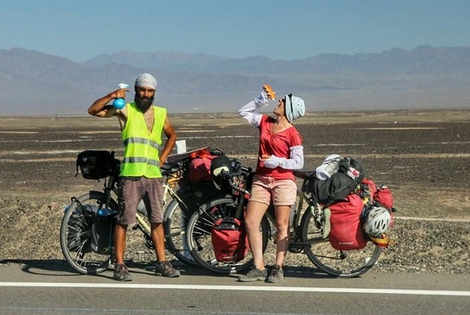
Milan has announced one of Europe’s most ambitious mobility schemes, known as Strade Aperte (open roads). Its goal is to reduce cars in phase 2 of the lockdown by increasing bike lanes and pedestrian areas.
The Lego hair bike helmet is the latest Internet craze. For now it’s just a prototype but production on a large scale will probably start soon.
Would you ever imagine you riding a bike and wearing a helmet that makes you look like a Lego figure? Well, now a hair helmet inspired in the figures of the Danish company has been created and has been called Lego bike helmet.
By now, the Lego hair helmet is just a prototype, a brainchild of Swedish designer Simon Higby and Danish designer Clara Prior – who work for the advertising agency DDB –, and has been created with the help of design company MOEF. The helmet has been made with a 3D printer and is totally based, from colour to size, on Lego figures’ hair.
“I’d buy it!”, “If it made more kids wear helmets then this would be great!” “In blonde please, I’ve always fancied being blonde!” are some of the comments appeared in the social media.
The project may be launched: Lego and Playmobil have been asked to help producing the helmet on a large scale. The hair size, as the site Cnet has shown in a photo, actually, mimics Playmobil hair, a historical Lego competitor in the production of building toys.
The idea has been received with such enthusiasm in the internet that it’s curious that this helmet hasn’t been sold in bulk yet. The design, actually, would encourage adults and children to wear safety bike helmets and transform themselves into one of the figurines of the toy that amuses them all.
The company Ribble Cycles also claimed that if someone wants to make it at scale they will ready to sell it in their online store.
And for those who aren’t content with the hair helmet, there’s also a Lego shopper bag invented by two designers whose handler’s hands are the plastic claws found on Lego figurines.
Siamo anche su WhatsApp. Segui il canale ufficiale LifeGate per restare aggiornata, aggiornato sulle ultime notizie e sulle nostre attività.
![]()
Quest'opera è distribuita con Licenza Creative Commons Attribuzione - Non commerciale - Non opere derivate 4.0 Internazionale.
Milan has announced one of Europe’s most ambitious mobility schemes, known as Strade Aperte (open roads). Its goal is to reduce cars in phase 2 of the lockdown by increasing bike lanes and pedestrian areas.
Formula 1, the world’s most important auto racing championship, has decided to turn the page and aim for carbon neutrality with the support of its teams, drivers and the whole racing circus.
After celebrating a year riding around the world Daniele Carletti and Simona Pergola arrived in China. Since the beginning there were a few problems: the visa on the passport expires in 30 days, not enough to travel China by bike. On 25 July the guys met three Chinese cyclists that were going to Tibet towards
Toyota and LifeGate began telling the story of hybrid mobility back in 2006, now, on the road to the Tokyo 2020 Olympics, they’re still treading the path of sustainable mobility. Here are the main steps of the journey.
Germany’s first solar bicycle lane could be the prototype for the roads of the future. The photovoltaic tiles melt snow and ice, and are capable of absorbing noise.
The Vespa is back in an electric version. Production has just started and the first models can be reserved online starting from October.
The city of Utrecht, in the Netherlands, is home to a bridge for cycling and walking that stretches over roof garden of a Montessori school. This project enhances practicality and will allow families to bring children to school by bike, passing through green areas. Despite their functionality, bridges are often seen as an infrastructure that is
Just as fires often give way to new growth, after the Dieselgate scandal, which saw Volkswagen cheating on US emission rules, the German car manufacturer radically changed course, beginning to focus on sustainable mobility. The German car company aims to propose thirty zero-emission models and produce at least one million battery electric vehicles by 2025. An ambitious mission
Sustainable, two-wheel mobility is triumphing in Copenhagen. After years of investments, policies, and infrastructural changes, bikes now outnumber cars in the city centre. The website Copenhagenize has released data linked to the number of vehicles entering the city centre, which are monitored by the city’s administration on a daily basis. Last year, 265,700 bikes have entered








